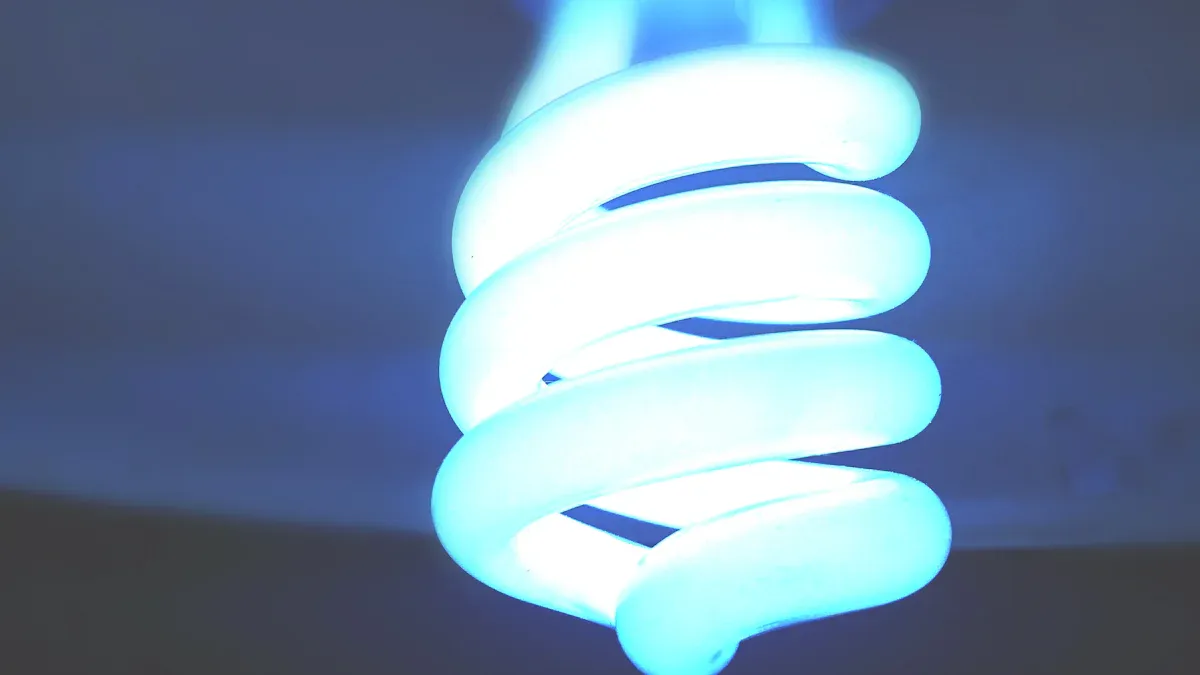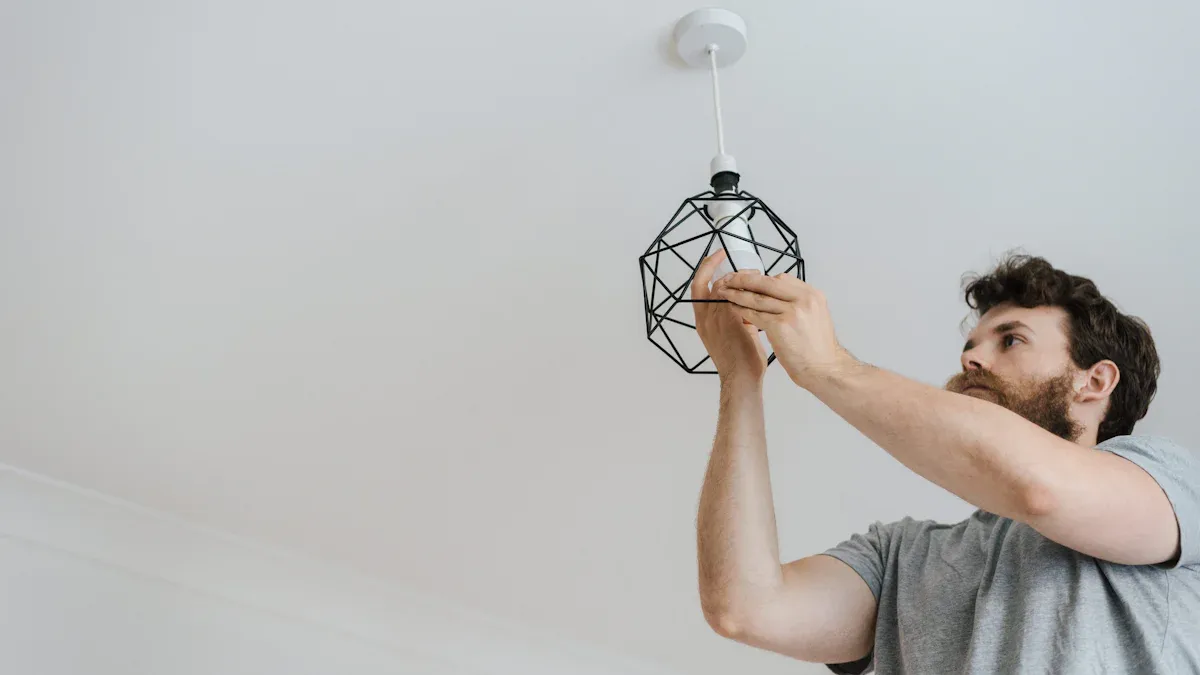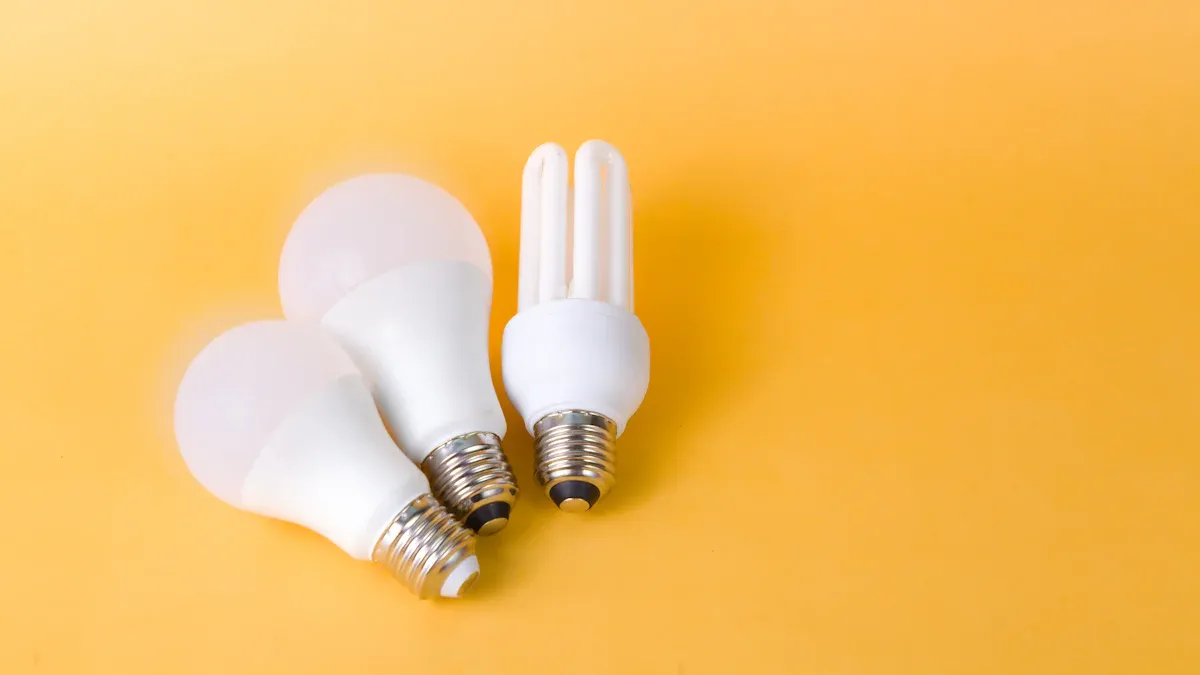FM Lighting Systems: Installation, Applications, and Energy Efficiency

Imagine you walk into a building with old lights. The lights flicker and use too much energy every month. You want to change to FM lighting systems, but there are problems. You have to think about how hard it is to work in many places. You also have to pay a lot at first. You need to make sure the lights follow the rules. You also need good data on how much energy you save. The lights should not need much fixing. You want to get your money back fast. FM lighting systems help you save more energy. They also help the planet. If you pick the right Led Light Product, your group can reach its goals. Go to the Home or About Us page to find more about new lighting and saving energy.
Key Takeaways
FM lighting systems help save energy and money. They use LED lights and smart controls like sensors and timers.
Planning and hiring experts make sure the installation is safe and works well. This also helps the system fit your building’s needs and budget.
These lighting systems make places more comfortable and safe. They also help save energy in offices, schools, hospitals, and outdoor spaces.
LED technology lasts longer and uses less power than old bulbs. It also makes less heat and pollution.
Smart lighting controls help you save money quickly. They help you reach green goals and keep your building working well.
FM Lighting Systems Overview
Key Features
When you pick lights for your building, you want good features. FM lighting systems are special because they help you save energy and give you more control. You can choose the best light for each room. Smart controls help you use less energy and make lights work better.
The right FM lighting system can cut energy use by half.
FM lighting systems have many ways to control lights. You can use things like sensors, timers, two-level switches, and daylight saving.
Some lights let you change how bright they are. Others have set brightness.
LED lighting lasts longer and does not wear out from turning on and off a lot. This makes it a smart pick for your building.
You should know what you want before you choose a system. Each control works best for different needs.
Tip: To save energy and get better light, pick LED lighting with smart controls.
Importance
FM lighting systems are important for managing buildings. They help you make spaces safe and comfortable while saving money and energy. You can connect these lights to other building systems. This gives you more control and helps you watch how much energy you use.
Aspect | How FM Lighting Systems Help You |
|---|---|
Occupant Comfort | Change lights for comfort and better air inside. |
Proactive Maintenance | Find problems early and fix them before lights break. |
Energy Efficiency | Use less energy, sometimes up to 88% less. |
Operational Efficiency | Make lights last longer and do less extra work. |
You can use LED lights to swap out old ones. This lowers power use and saves money. You also help the earth by using less energy. FM lighting systems work with building automation to give you live data. You can use this data to make smart choices and keep your lights working well.
Installation Process

Planning
You need a strong plan before you start any lighting installation. Begin by setting a clear budget. This budget should cover labor, materials, equipment, and any extra costs. Track your spending as the project moves forward. This helps you avoid going over budget. You should also look at the return on investment. This step lets you see how fast you will save money with new lighting and LED upgrades.
Next, check the lighting needs in your building. Use audits, surveys, and sensors to find out where you need more or less light. Some areas may need brighter lights, while others can use dimmer settings. Think about how people use each space and how much daylight comes in. Pick LED options that last long and use less energy. These lights also let you control brightness and color.
Tip: Always plan for safety. Make sure your plan follows all local codes and rules. This keeps your building safe and avoids problems later.
Steps
You can follow these steps for a smooth lighting installation:
Audit Your Facility
Walk through your building and check the current lighting. Look for old fixtures, dark spots, and places where you waste energy.Choose the Right LED Products
Pick LED lights that fit your needs. Look for options with good color, long life, and dimming features. LEDs help you save energy and lower your bills.Design the Layout
Plan where to put each light. Use natural daylight when you can. Place fixtures to avoid shadows and make sure every area gets enough light.Install Smart Controls
Add sensors, timers, and automated systems. These tools help you use less energy by turning lights off when no one is around.Hire Professionals
Bring in trained electricians for the installation. They know how to handle wiring, fix problems, and keep your building safe.Test and Adjust
After installation, test all lights and controls. Adjust settings to match your needs. Make sure emergency lighting works well.Train Your Team
Teach your staff how to use the new lighting system. Show them how to adjust controls and report problems.
Note: Each facility is different. You may need to change these steps to fit your building’s needs.
Best Practices
You can follow best practices to make your lighting installation safe and efficient:
Use LED fixtures to cut down on energy use and reduce how often you need to replace bulbs.
Add lighting controls like sensors and timers. These tools help you save energy and make bulbs last longer.
Keep emergency lighting in good shape. Make sure exits and pathways stay lit at all times.
Use an "economize mode" at night. This keeps key areas safe but saves energy in empty spaces.
Track all costs and keep good records. This helps you manage your budget and spot ways to save more.
Work with your team and vendors. Good communication makes the installation process smoother.
Choose sustainable designs. This helps your building use less energy and supports your green goals.
Automate maintenance tasks. Use electronic work orders to fix problems fast and keep your system running well.
You may face some common challenges during installation:
Flickering lights can mean loose bulbs or wiring problems. A professional can fix these issues.
Exposed wires are dangerous. Always have experts cover and secure them.
Warm outlets can signal a fire risk. Call a professional right away if you notice this.
High energy bills may show that your lighting is not efficient. Upgrading to LED products and smart controls can solve this.
Remember: Hiring professionals keeps your building safe. They use the right tools and know how to fix problems. This lowers the risk of fire or electric shock.
A good lighting installation uses LED technology, smart controls, and a plan that fits your building. You save energy, lower costs, and make your space safer and more comfortable.
Applications

Commercial Spaces
You find commercial lighting in offices and stores. Parking garages also use these lights. These places keep lights on for many hours. They use a lot of power. You can use controls to save energy. Controls also make people feel more comfortable. Here is a table that shows how lighting controls work in these places:
Lighting Control Method | Description | Primary Applications in Commercial Spaces | Energy Savings Potential |
|---|---|---|---|
Occupancy Sensing | Sensors turn lights on or off when people enter or leave. | Offices, parking garages, stairwells | |
Scheduling with Timers | Timers set lights to turn on or off at certain times. | Outdoor lighting, regular indoor schedules | 10-20% less energy use |
Bi-level Switching | Two circuits let you lower light levels when full light is not needed. | Parking garages, stairwells, offices | 20-70% less energy use |
Daylight Harvesting | Sensors dim or turn off lights when daylight is enough. | Rooms or zones with daylight | 25-30% less energy use |
Daylight can make rooms brighter and nicer. Adjustable lights help people work and stay awake. Many projects use daylight and controls to save money. These steps also help people get more work done.
Education
Schools and colleges need good lights for learning. LED lighting and daylight help save energy. They also help students pay attention. FM lighting systems in schools use wireless sensors and timers. Dimmers help lights run only when needed. You can change old lights to LED to save money.
LED lighting uses much less energy than old lights.
Less heat from lights means you spend less on cooling.
Daylight harvesting lets you use sunlight and dim the lights.
Networked lighting control helps you manage all school buildings.
These steps can cut lighting energy use by a lot.
Bright, comfy spaces help students learn better. You also spend less money and help the planet.
Healthcare
Hospitals and clinics need special lights. Patients must feel safe and comfortable. FM lighting systems use tunable white light to match daylight. This helps people heal. Dimming and occupancy sensors save energy and follow rules. LED lighting lasts longer and needs less fixing.
Lighting controls help staff do their jobs. They also help stop eye strain. UV-C lighting can keep rooms clean. These systems help you follow new lighting laws. You make a safe and healthy place for everyone.
Outdoor Areas
Good outdoor lighting keeps people safe. FM lighting systems use motion and daylight sensors. Timers help too. These tools change lights based on what is happening outside. For example, parking lots stay dim until someone walks by. Then, the lights get brighter.
LED lights help drivers and people see at night. Lighting controls save energy and keep outdoor areas safe. Cities use plans to make sure public spaces have enough light. You help stop accidents and make outdoor spaces friendly.
Tip: Use daylight and lighting controls together for the best results in every building.
LED Technology
Benefits
You get many advantages when you choose led technology for your lighting needs. Led lighting uses much less energy than old bulbs. You can save money on your power bills every month. Led technology turns almost all the energy it uses into light. Only a small part becomes heat, so you do not waste energy.
Led luminaires use less than half the energy of old lighting like HID or incandescent bulbs.
Led lighting lasts much longer. You can expect led lights to work for 60,000 to 100,000 hours. This is two to four times longer than metal halide or sodium vapor lights.
Led technology gives you instant full brightness. You do not have to wait for the lights to warm up.
Led lighting is safer. It does not get very hot, so you lower the risk of burns or fire.
Led lights are strong and can handle bumps or shakes. They use sturdy materials like plastic.
Led technology does not use toxic chemicals like mercury. You help the environment when you pick led lighting.
Led lighting gives you better quality light. You see less flicker and glare, which helps your eyes.
Led technology lets you dim the lights or pick different colors for your space.
Led lighting cuts down on greenhouse gas emissions. You help the planet by using less energy and making less waste.
Tip: Led technology works well in extreme temperatures and harsh places. You can use led lighting almost anywhere.
Retrofit Projects
You can upgrade your old lighting to led technology with retrofit projects. This means you keep your current fixtures but switch out the old bulbs for led lighting. You save a lot of energy this way. When you retrofit with led technology, you can cut your energy use by up to 75 percent. This big drop in power use means you pay less for electricity.
Retrofit projects also mean you do not have to replace your whole lighting system. You save money on labor and materials. Led technology lasts longer, so you do not need to change bulbs as often. You also spend less time and money on repairs. Led lighting makes your building safer and more comfortable for everyone.
Note: Retrofit projects with led technology help you reach your energy goals faster. You get a quick return on your investment and help protect the environment.
Energy Efficiency
Controls and Sensors
You can make your building use less energy with smart lighting controls. These controls help you stop wasting energy and save money. Many types of controls and sensors work together for the best results. Here are some good choices:
Occupancy sensors know when people walk in or out. They turn lights on or off by themselves. Wireless occupancy sensors are easy to put in. In some stairwells, these sensors saved up to 80% of energy.
Daylight sensors help you use sunlight instead of lights. They check how much daylight is in a room. Then, they change the lights to save power. You can save 20% to 60% of energy with daylight harvesting.
Digital dimming ballasts let you change how bright the lights are. You can make lights about 20% dimmer without bothering anyone.
Wireless controls and programmable systems let you change lights as you need. These systems help you follow energy rules and save more.
The main lighting control rules are area control, automatic shut-off, daylight zone control, and letting people dim lights. These features help you use less energy.
Smart lighting controls use occupancy sensors like passive infrared, ultrasonic, or microwave types. These sensors turn off or dim lights when no one is there. This stops energy waste. You can use these controls with daylight harvesting for even more savings. The Empire State Building used these controls and saved 65% on lighting electricity. You can use these ideas to reach your own energy goals.
Tip: Use different sensors and smart controls together for the most energy savings and comfort.
ROI
You want to know how fast you get your money back after changing your lights. Most lighting control upgrades in big buildings pay for themselves in less than six years. You save money each month on energy and fixing lights. Using LED lighting and smart controls helps you save even more.
Lighting controls like occupancy sensors, daylight harvesting, and dimming help you use much less power. These savings grow over time. You spend less on energy and repairs. You also avoid fines by following energy rules. Many building owners get their money back fast because these new systems lower costs and save more.
Note: Check your energy use before and after you upgrade. This shows your real savings and proves your lighting controls work.
Sustainability
FM lighting systems help you meet your green goals. You use less energy and make less pollution. These systems help cities be greener and use resources better. They also help fight climate change. Here are some ways lighting controls help the planet:
You use less energy and make fewer greenhouse gases.
Occupancy sensors and smart controls turn off lights in empty rooms. This stops waste and helps you use energy wisely.
Energy-saving lights help you get green building awards like LEED.
Lighting controls help you save money and protect nature at the same time.
You show your company cares about the planet and being green.
Smart lighting controls can work with building automation systems. You can make rooms more comfy and healthy by changing the light color and brightness. These tools help you make a better place for everyone and reach your energy and green goals.
Callout: Every time you improve your lighting controls, you get closer to a greener and more energy-saving building.
You get lots of good things when you switch to FM lighting systems. LED lighting can save up to 90% energy. It also lasts much longer than old bulbs. This means you do not need to change bulbs as often. You also spend less money fixing lights. Smart controls help you use less energy. Doing regular checks keeps your lights working well. This helps you save more money over time.
Many places have saved more money by using LED upgrades, doing energy checks, and getting special deals.
To save the most energy and help the planet, ask a pro to check your building and look for local money-back offers.
FAQ
What is the main benefit of switching to LED lighting in FM systems?
You save energy and money with LED lighting. LEDs last much longer than old bulbs. You also get better light quality. Your building becomes safer and more comfortable.
How do smart controls help you save energy?
Smart controls turn lights off when no one is in the room. Sensors and timers adjust lighting based on use. You avoid wasting power. This helps you lower your energy bills.
Can you upgrade old lighting systems without replacing all fixtures?
Yes, you can use retrofit kits. These kits let you keep your old fixtures and just change the bulbs to LEDs. You save money and time with this method.
How often do you need to maintain FM lighting systems?
You do not need to fix LED lights often. LEDs last many years. You should check controls and sensors once a year. This keeps your system working well.
Tip: Regular checks help you spot problems early and keep your lights running smoothly.
See Also
Comprehensive Guide To Track LED Lighting Systems And Design
Effective Commercial Lighting Solutions And Practices For Businesses
Optimizing Light Commercial Electrical Systems Through Integration Techniques
Energy Efficient LED Indoor Lighting Types And Their Uses
Choosing Efficient Industrial LED Bulbs For Various Applications

